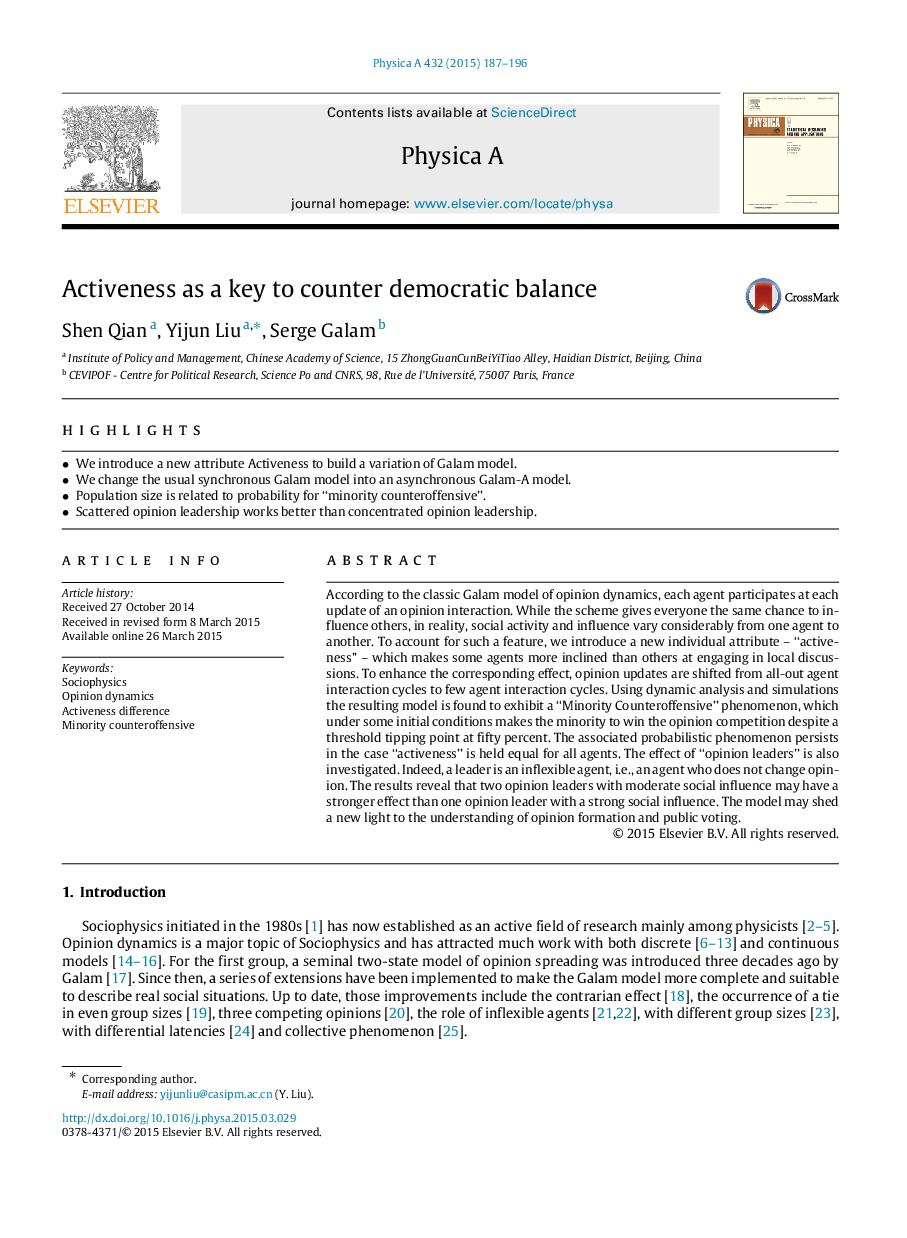| Article ID | Journal | Published Year | Pages | File Type |
|---|---|---|---|---|
| 974244 | Physica A: Statistical Mechanics and its Applications | 2015 | 10 Pages |
•We introduce a new attribute Activeness to build a variation of Galam model.•We change the usual synchronous Galam model into an asynchronous Galam-A model.•Population size is related to probability for “minority counteroffensive”.•Scattered opinion leadership works better than concentrated opinion leadership.
According to the classic Galam model of opinion dynamics, each agent participates at each update of an opinion interaction. While the scheme gives everyone the same chance to influence others, in reality, social activity and influence vary considerably from one agent to another. To account for such a feature, we introduce a new individual attribute–“activeness”–which makes some agents more inclined than others at engaging in local discussions. To enhance the corresponding effect, opinion updates are shifted from all-out agent interaction cycles to few agent interaction cycles. Using dynamic analysis and simulations the resulting model is found to exhibit a “Minority Counteroffensive” phenomenon, which under some initial conditions makes the minority to win the opinion competition despite a threshold tipping point at fifty percent. The associated probabilistic phenomenon persists in the case “activeness” is held equal for all agents. The effect of “opinion leaders” is also investigated. Indeed, a leader is an inflexible agent, i.e., an agent who does not change opinion. The results reveal that two opinion leaders with moderate social influence may have a stronger effect than one opinion leader with a strong social influence. The model may shed a new light to the understanding of opinion formation and public voting.
